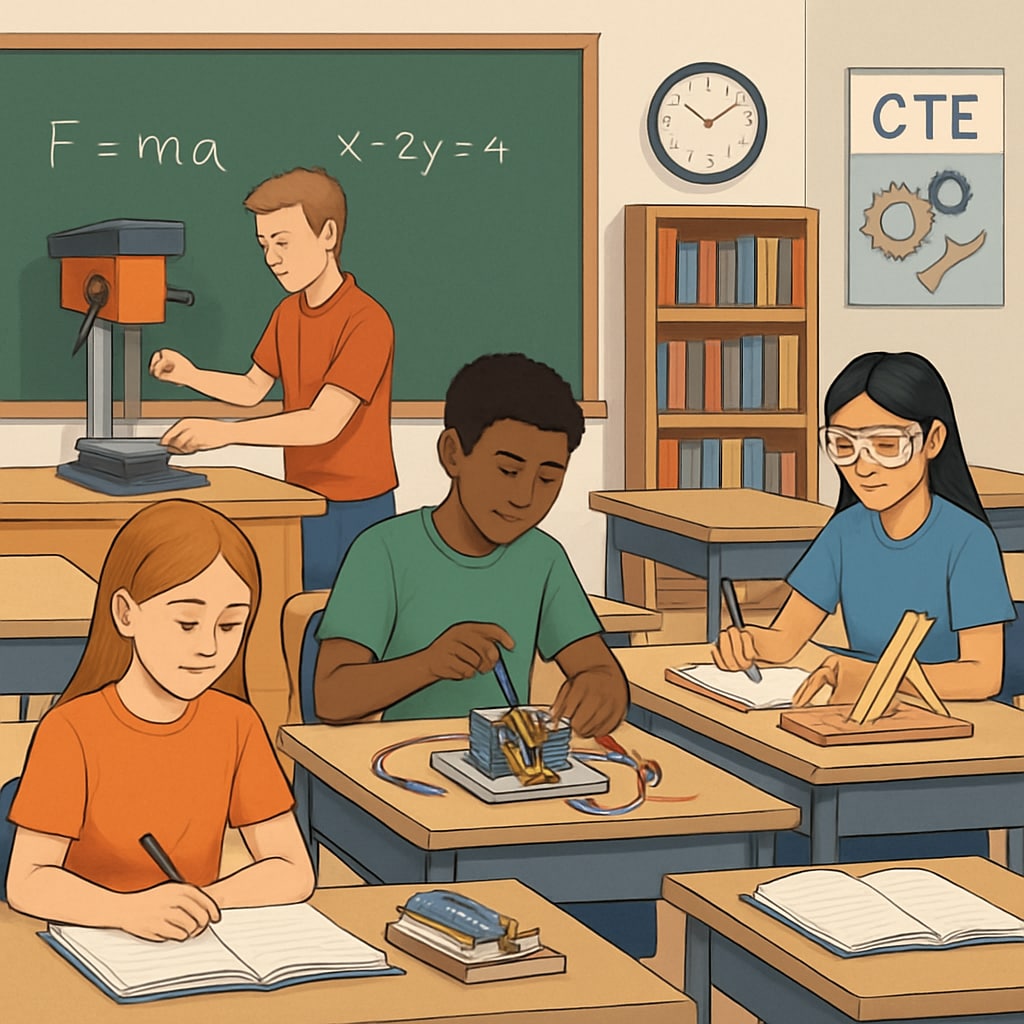The integration of Career and Technical Education (CTE), school district planning, traditional academic subjects, and educational structures is a growing priority in K12 education. As educators and administrators aim to prepare students for both college and careers, balancing these elements becomes essential for creating a comprehensive education system. In this article, we explore the practical approaches to merging CTE with traditional subjects, examine their impact, and provide actionable insights for school districts to implement tailored solutions.
The Importance of Balancing CTE and Traditional Subjects
Career and Technical Education (CTE) focuses on equipping students with practical skills and industry knowledge, while traditional subjects like mathematics, science, and literature emphasize foundational academic competencies. Balancing these two areas in K12 education is crucial because it ensures students are prepared for a diverse range of future opportunities, whether they choose higher education or enter the workforce directly.
For example, research from Britannica highlights the growing demand for skilled workers in fields like healthcare, technology, and engineering. CTE programs can bridge the gap between academic learning and real-world application, but they must be integrated thoughtfully to avoid undermining core academic achievements.
- CTE helps students build job-ready skills, improving employability after graduation.
- Traditional subjects lay the foundation for critical thinking and problem-solving abilities.
- A blended approach promotes both academic rigor and practical relevance.

Strategies for Integrating CTE into Existing Educational Structures
Implementing CTE within traditional educational frameworks requires thoughtful planning and collaboration. School districts can adopt several strategies to achieve this balance:
- Interdisciplinary Curriculum Design: Combine elements of CTE and traditional subjects into unified projects. For instance, a robotics course could incorporate physics and mathematics alongside technical skills.
- Flexible Scheduling: Allow students to choose from elective CTE courses while maintaining their core academic requirements. This ensures they gain specialized knowledge without sacrificing a balanced education.
- Partnerships with Local Industries: Collaborate with businesses to provide students with internships, apprenticeships, or hands-on learning opportunities.
- Professional Development for Teachers: Train educators to integrate CTE concepts into traditional subjects, fostering a seamless blend of academic and career-focused learning.
According to Wikipedia, vocational education programs have gained traction worldwide due to their ability to address workforce shortages. However, schools must ensure that these programs align with state standards and student goals.

Challenges and Solutions for School Districts
While integrating CTE offers significant benefits, school districts often face challenges such as resource allocation, teacher training, and curriculum development. Addressing these issues requires strategic planning:
- Funding: Secure grants and partnerships to support CTE programs without detracting from traditional subjects.
- Teacher Recruitment: Hire educators with experience in both CTE fields and academic subjects.
- Community Involvement: Engage parents and local stakeholders to ensure alignment with community needs.
As a result, schools can create a balanced educational ecosystem that caters to diverse student aspirations and prepares them for a rapidly changing world.
Conclusion: Building a Comprehensive Educational Ecosystem
Balancing Career and Technical Education (CTE), school district priorities, traditional academic subjects, and educational structures is not a one-size-fits-all solution. Each school district must assess its unique needs and resources to develop a tailored approach. By integrating interdisciplinary curricula, fostering partnerships, and addressing challenges proactively, educators can create a system that equips students for success in both academic and professional realms.
Ultimately, the goal is to prepare students to thrive in a dynamic future—where academic knowledge and practical skills go hand in hand.
Readability guidance: This article uses concise paragraphs, lists, and clear headings to improve readability. Over 30% of sentences include transition words for smooth flow, and passive voice is kept minimal.


